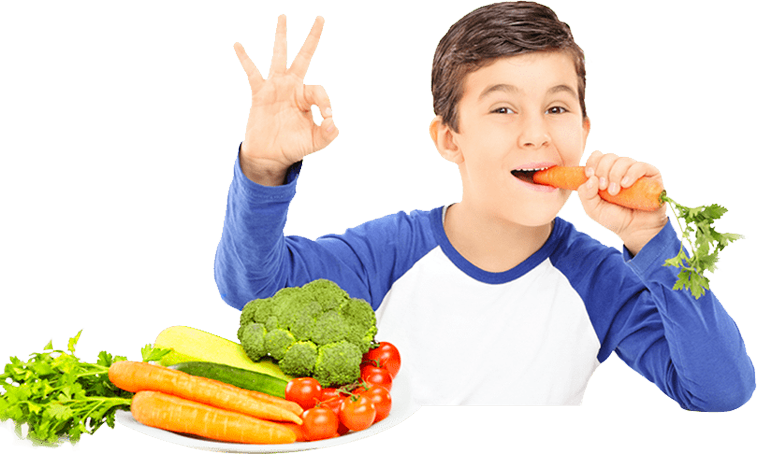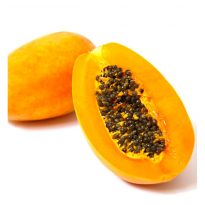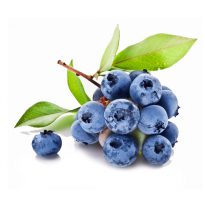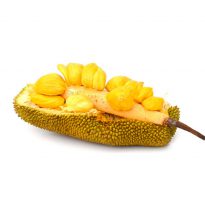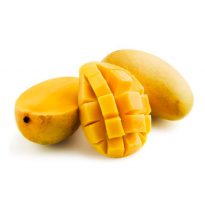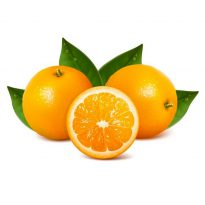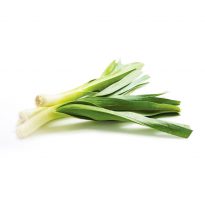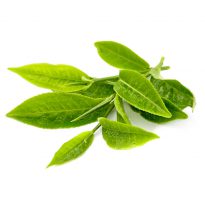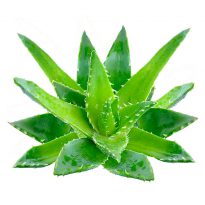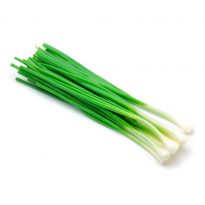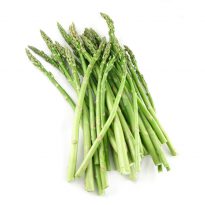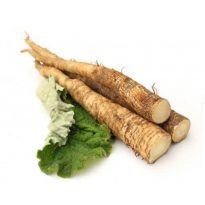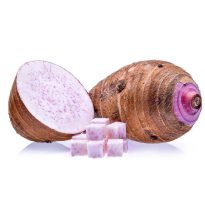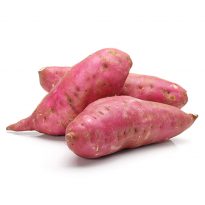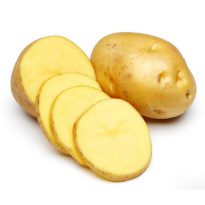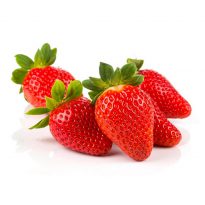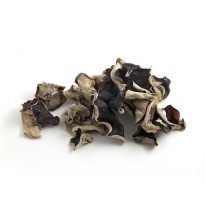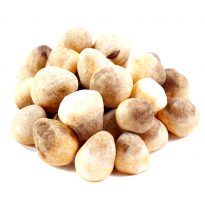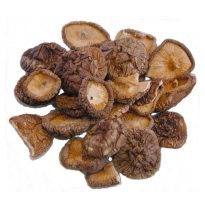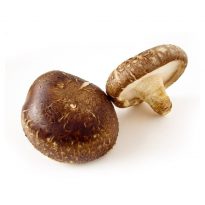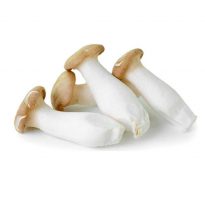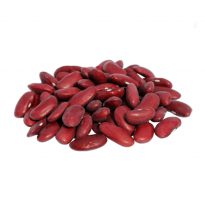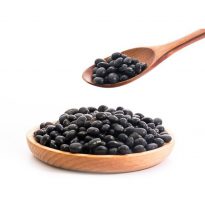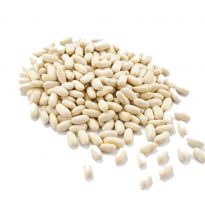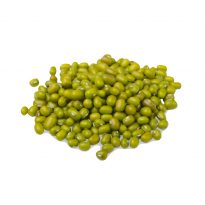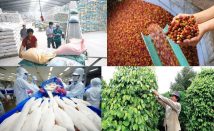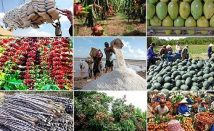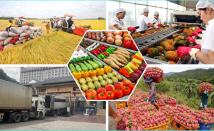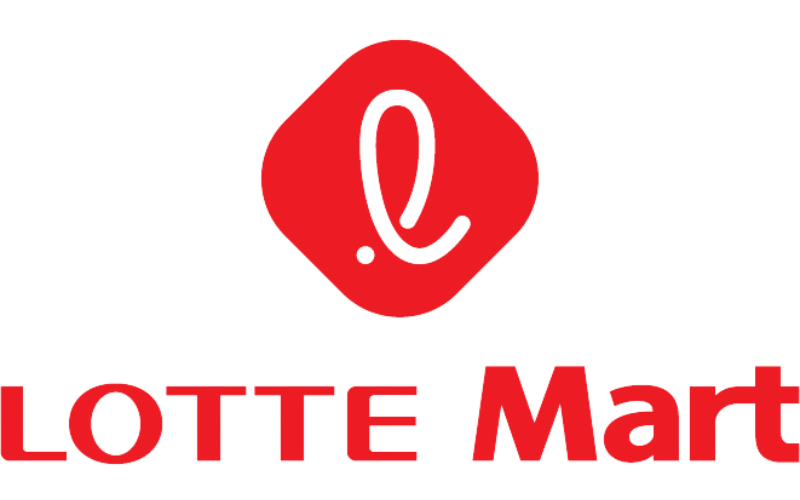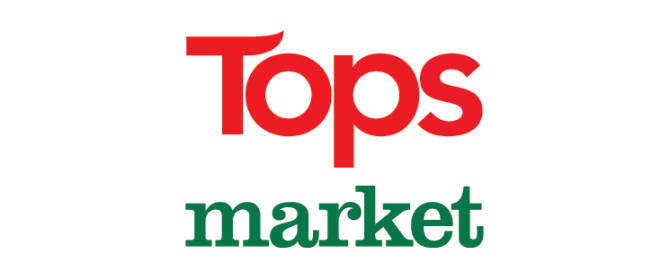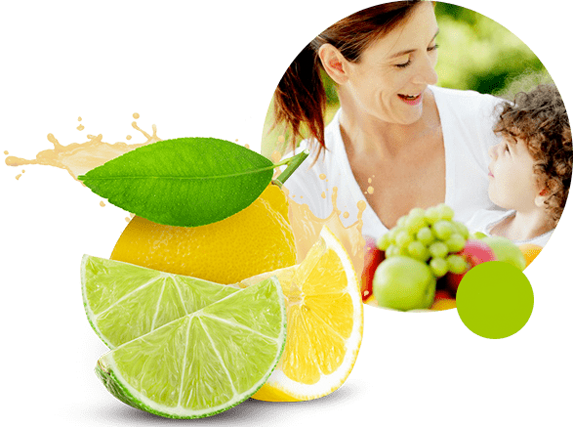
About GREENFARM
Green Farm Import and Export Limited Company (Green Farm Co., Ltd.), is a member of Phu Hung Corporation. Our company was established in 2013 with target is to become the leader of the Agricultural and food product market...
WHY GREEN FARM?
Featured products
HOTLINE
+84 906 963 288
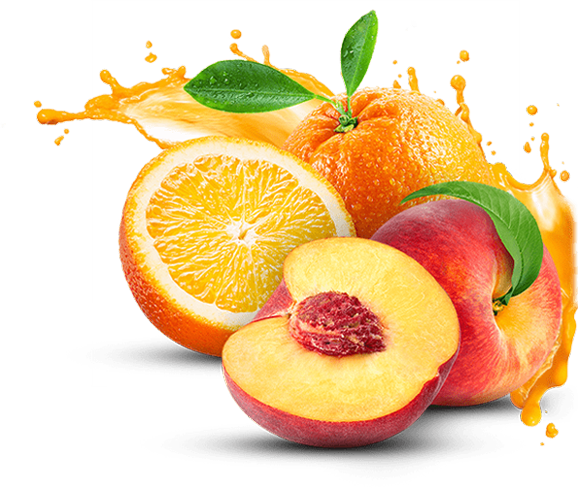
VIETNAM NEWS
-
BRIGHT SPOT FROM CHINESE MARKET
In the first month of 2023, agricultural exports have shown signs of improvement. Mr. Nguyen Dinh Tung – General Director of Vina T&T Group, said that fresh fruit export orders in January recorded a growth of 30% compared to the same period last year. Besides that, traditional products maintain stable orders. Notably, grapefruit exported to the US and durian to China contributed to this growth. Even new products joining the official export race have additional orders every day. “One is due to market demand, purchasing power in Europe and the US is recovering faster than forecast by the end of the second quarter of 2023. Meanwhile, fresh fruit products are consumed quickly, so partners place new orders daily, especially from the Chinese market,” said Mr. Nguyen Dinh Tung. According to Mr. Le Ba Anh, Deputy Director of the Department of Agriculture, Forestry and Fisheries Quality Management (Ministry of Agriculture and Rural Development), China will open its borders and remove the “Zero COVID” policy from January 8, 2023. The biggest beneficiaries are the fresh agricultural products industry. “High-value fresh goods, such as crabs, lobsters, tiger prawns and white-leg shrimp, are almost only exported by road, but during the period when China was controlling the ‘Zero COVID’ epidemic, border gates were congested and goods could not be exported. Therefore, when they open trade, customs clearance is more convenient for these items. Second, the consumption power of the market of 1.4 billion people has been suppressed for nearly 3 years. Recently, they reopen restaurants, the demand for fresh seafood will increase sharply,” Mr. Le Ba Anh commented. According to this opportunity, Mr. Nguyen Thanh Hai, General Director of Hacaseafood Seafood Joint Stock Company, said that in January, the business had nearly 200 containers of goods exported to the Chinese market for the Lunar New Year. The reopening of China’s borders is considered a bright spot for our country’s agricultural exports in 2023 because the market of 1.4 billion people accounts for more than 17% of the entire industry’s export turnover. While the fresh produce industry takes advantage of geographical advantages to sharply increase export orders to China, many agricultural product industries with high economic value continue to reach out to demanding markets, especially rice grains. Last year, ST25 rice was officially imported and sold in supermarkets in Japan, the Middle East and Europe. Even branded rice from Vietnam was chosen to be put into the kitchen of the Japanese Cabinet. Evidence shows the shift from output to quality thinking in the agricultural sector. Not only is it licensed for official import, but Vietnamese brand rice is sold at very high prices – Mr. Pham Thai Binh, General Director of Trung An High-Tech Agriculture Joint Stock Company, said that last year, the price of fragrant rice exported to the Middle East and Europe reached an average of 650 USD/ton, especially ST24 rice and ST25 costs over 1,000 USD/ton. This is the high export price for rice products for years. Affirming the brand in difficult markets has created momentum for Vietnamese rice in the first days of 2023. For example, Trung An Company has signed many contracts to supply rice for delivery from now until the beginning of the second quarter of 2023 to rice suppliers. Korean, Malaysian, Singaporean, European, Australian and American markets, the number is nearly 1,500 containers, equivalent to about 30,000 tons, mainly high quality rice and fragrant rice. “There is a lot of demand for high quality and safe rice from domestic and world consumers today. Therefore, I believe that in 2023, Vietnam’s rice exports will continue to grow in both quality and value. The price of exported rice in early 2023 is very high, we sell it for 600-1,250 USD/ton, even 100% broken rice is sold for up to 468 USD/ton,” Mr. Pham Thai Binh said. I think in 2023, rice export businesses will win big. Mr. Do Ha Nam, Vice President of the Vietnam Food Association, said that rice prices are usually very low at the end of the season, so import partners base on that price to negotiate to buy the Winter-Spring crop. However, this year, at the end of the season, we sold at a quite high price, so contracts signed for the Winter-Spring crop in 2023 will have better prices. More importantly, when rice prices increase, farmers have more motivation to expand their area, improve productivity and quality. There are still many challenges Entering the new year, along with opportunities from the market, our country’s agricultural exports are forecast to still face many challenges. Mr. Truong Dinh Hoe, General Secretary of the Vietnam Association of Seafood Exporters and Producers (VASEP), said that Vietnamese businesses can take advantage of geography, low transportation costs, and high demand to promote seafood exports to the Chinese market. However, the Chinese market is no longer an easy-going market, the standards are becoming more and more difficult, especially with very unexpected regulations and adjustments for imported seafood. Therefore, Vietnamese businesses must have changes in perspective and mentality, reach deeper into the Chinese market, and build detailed strategies for each local segment if they want to increase their proportion in this market. As for Mr. Pham Thai Binh, the issue of cooperation and solidarity between businesses in the same industry is still weak. As for the situation of “domestic chickens fighting each other”, it is difficult for the country’s agriculture to reach out. Meanwhile, Deputy Minister of Agriculture and Rural Development Phung Duc Tien recommended that in any market, Vietnamese agricultural products must build a competitive strategy in terms of quality, price, and brand. Therefore, what needs to be done immediately with domestic agricultural production is to focus on production and upgrade the quality of all agricultural products according to the standards of demanding markets. One of the mandatory requirements is traceability. Deputy Minister Phung Duc Tien emphasized that the codes of growing areas, ponds, processing and packaging facilities must be confirmed. Linking to form growing areas, ensuring growing area codes are large enough and products are supplied stably to the market in both quality and output. Global GAP and VietGAP processes are strictly implemented from seeds and seedlings. Expand bilateral trade relations, aiming for official exports and large-scale production of goods. By doing this, Vietnamese agricultural products will have the opportunity to maintain their foothold and market share, increasing competitiveness in the global market as well as right at home. -
EXPORT OF AGRICULTURAL, FORESTRY AND FISHERY PRODUCTS IN THE FIRST QUARTER OF 2023: MIXED MOVEMENTS
According to the Ministry of Agriculture and Rural Development, due to the Tet holiday as well as the impact of difficulties in orders, Vietnam’s export value of agricultural, forestry and fishery products in the first quarter of 2023 reached just over 3.7 billion USD, down more than 23% compared to the same period last year. Of which, the export value of main agricultural products reached more than 1.7 billion USD, down nearly 13% over the same period last year; Seafood export value is estimated at 600 million USD, down nearly 31%; The export value of wood and wood products reached 1.1 billion USD, down nearly 30% compared to January last year. Many products whose export turnover value increased sharply in 2022, but in the first month of this year, their export value decreased. For example, seafood exports in 2022 will reach a record figure of 11 billion USD for the first time, an increase of 23.8% compared to 2021. However, currently seafood exports are continuing to decline sharply following the trend of the last quarter of the year. Last year, January 2023 only brought in 600 million USD, down 31% compared to January 2022. Of which: shrimp exports earned more than 169 million USD, down 46% over the same period last year; Pangasius export reached 107 million USD, down 50%; Tuna exports earned nearly 60 million USD, down 32% over the same period last year. Wood exports are also in a similar situation. Mr. Do Xuan Lap, Chairman of the Vietnam Timber and Forest Products Association, said that in 2022, the wood industry will go through two distinct periods, in the first half of the year export value increased, but in the second half of the year orders decreased, Losing orders, businesses cut labor. However, the export of wood and forest products in 2022 will still reach 16.923 billion USD, exceeding the set plan by 3.8%, increasing by 6.1% compared to 2021. Of which, the export of wood and wood products reached 16,000 USD. 01 billion USD, an increase of 8.1% compared to 2021. On the contrary, many agricultural products, although their export turnover decreased in 2022, increased in value in the first month of this year. For example, the export value of livestock products is estimated to reach 30 million USD in January 2023, an increase of more than 14% over the same period last year. Meanwhile, the export value of livestock products in 2022 is 400 million USD, down 7.1% compared to 2021. In cashew products, exports in 2022 bring in 3.3 billion USD, down 10.1% in value compared to 2021. By January 2023, cashew export value reached 226 million USD, an increase of 0,000 USD. 7% compared to January 2022. Regarding fruits and vegetables, according to statistics from the General Department of Vietnam Customs, fruit and vegetable export turnover in 2022 is 3.3 billion USD, down 5.68% compared to 2021. By January 2023, exports Fruit exports have grown strongly with an estimated increase of up to 25% over the same period last year. The reason why fruit became a strong export item in the first month of the year is because China opened its border gates, along with protocols signed at the end of 2022, creating momentum for exports in 2023. Mr. Nguyen Dinh Tung – General Director of Vina T&T Group, said that fresh fruit export orders in January 2023 recorded a growth of 30% compared to the same period last year. Notably, grapefruit exported to the United States and durian to China contributed to this growth. Fresh fruit products are consumed quickly, so partners place new orders every day, especially from the Chinese market. According to the Vietnam Food Association, by mid-January 2023, rice exports reached more than 226,000 tons with nearly 115 million USD, an increase of over 41% in output and value compared to the same period in 2022. “Usually at the end of the season, rice prices are very low, so import partners base on that price to negotiate to buy the Winter-Spring crop. However, this year, at the end of the season, we sold at a quite high price, so contracts signed for the Winter-Spring crop in 2023 will have better prices. More importantly, when rice prices increase, farmers have more motivation to expand their area, improve productivity and quality,” said Mr. Do Ha Nam, Vice Chairman of the Vietnam Food Association. Last year, ST25 rice was officially imported and sold in supermarkets in Japan, the Middle East and Europe. Even branded rice from Vietnam was chosen to be put into the kitchen of the Japanese Cabinet. Evidence shows the shift from output to quality thinking in the agricultural sector. Mr. Pham Thai Binh – General Director of Trung An High-tech Agriculture Joint Stock Company, said that affirming the brand in difficult markets has created momentum for Vietnamese rice in the early days of 2023. Trung An Company An has signed many contracts to supply rice for delivery until the beginning of the second quarter of 2023 to the Korean, Malaysian, Singaporean, European, Australian and US markets, the quantity is up to nearly 1,500 containers, equivalent to about 30,000 tons, mainly High quality rice and fragrant rice. “Right from the 4th day of Tet, my company returned to production to promptly deliver goods to partners. The price of exported rice in early 2023 is very high, we sell it for 600-1,250 USD/ton, even 100% broken rice is sold for up to 468 USD/ton,” Mr. Pham Thai Binh said. I think in 2023, rice export businesses will win big. Mr. Nguyen Chanh Trung – Deputy General Director of Tan Long Group said that Tan Long’s A An rice brand is present in large markets and has high technical requirements such as Japan, Germany, Czech, Sweden… Tan Long will continue to promote the export of high-value key rice product lines such as ST24, ST24 Organic and Japonica to Japan. After Japan, Tan Long will continue to look for opportunities in other large potential markets such as the US and Europe (EU). According to Mr. Le Ba Anh, Deputy Director of the Department of Agriculture, Forestry and Fisheries Quality Management (Ministry of Agriculture and Rural Development), China opened its borders and removed the “Zero COVID” policy from April 1, 2020. On January 8, 2023, the fresh agricultural products industry will benefit the most. However, the Chinese market is no longer an easy-going market, the standards are becoming more and more difficult, especially with very unexpected regulations and adjustments for imported seafood. “At this time, Vietnamese businesses can take advantage of geography, low transportation costs, high demand to promote the export of agricultural and aquatic products to the Chinese market.” -
PROCESS AND PROCEDURES FOR EXPORTING VIETNAMESE AGRICULTURAL PRODUCTS
In this article, let’s join GREEN FARM to fully understand about the processes and procedures for exporting agricultural products being applied in Vietnam. In recent times, the export of agricultural products is being promoted because the quality of Vietnamese agricultural products is increasingly improving and many market areas have accepted the import of our country’s agricultural products. So, when having quality agricultural products in hand and the international market is welcoming, what do Vietnamese businesses need to do to be able to export products abroad and earn profits for their company? Vietnam’s main export agricultural products In 2022, Vietnam will have 5 groups of agricultural products with export turnover of over 3 billion USD: Coffee: 3.94 billion USD; Rice: 3.49 billion USD; Rubber: 3.31 billion USD; Fruits and vegetables: 3.34 billion USD; Cashew nuts: 3.07 billion USD; Of course, in addition to the top 5 products and product groups mentioned above, we still have many other agricultural products that are also being promoted for export, such as: cassava, pepper, tea, cocoa, cotton…etc Some notes when exporting agricultural products For new export units, it is necessary to pay close attention to the contents that need to be prepared to make the work smooth and avoid problems that may arise. This advance check is highly important, because each country importing agricultural products most likely has its own regulations on importing agricultural products. For example: Korea: imported products must be packaged and fully labeled according to their regulations. Japan: only a few agricultural products are allowed to be imported into this difficult country, so you must check the list of agricultural products accepted by Japan. Europe: is very strict on maximum pesticide residue levels (MRL – Maximum Residue Levels) on food, so Vietnamese exporters need to research and prepare carefully to meet European standards. Surname. China: procedures are somewhat more convenient, but only a few types of agricultural products can go through official channels. A large number of products are exported across land borders via unofficial channels. Customs procedures for exporting agricultural products Check whether agricultural products comply with the requirements of the importing country. Before carrying out export procedures, your company needs to find out whether the importing country accepts this product from Vietnam, and whether your product meets quality requirements or not. This preliminary check should be done from the beginning, thereby helping you find a suitable market and importing country suitable for each type of agricultural product. Prepare requirements before exporting: Below are some requirements that may have to be met when bringing agricultural products into a partner’s market: Phytosanitary Product irradiation The growing area meets standards Meets standards, content, and residues of pesticides. Packaging standards, packaging, labels In addition, for agricultural products that require cold storage, it is necessary to pay attention to the necessary time periods to keep the temperature at the necessary cold level: Harvest time of agricultural products; Time to pack goods into containers; Waiting time for customs procedures, irradiation, quarantine, fumigation…; Delivery time. All of the above time periods need to be calculated to match each other, to ensure agricultural products are kept cold at the right temperature to avoid damage. This has much to do with the cold supply chain of agricultural products that Vietnam is gradually forming and developing strongly. These preparation and inspection work are very important, deciding whether the goods are of guaranteed quality and meet foreign standards or not. Prepare export documents Exporters need to prepare the following documents: Export foreign trade contract Commercial invoice Packing slips Quality certification Certificate of origin Certificate of fumigation For agricultural products that have been imported and now want to be exported, an additional import plant quarantine certificate is needed, issued by the plant quarantine department when the goods were previously imported into Vietnam. Prepare for shipping According to the established plan, the exporter prepares the goods. Transportation arrangements depend on the signed commercial conditions (such as FOB, CFR… in Incoterms). The transport unit pulls the empty container to the warehouse for the business to pack the goods, then transports it to the port to wait for customs clearance and export. Quarantine sampling and fumigation are performed in this step. If doing this for the first time, quarantine officers may need to go to a separate warehouse to take samples and check the raw material area (if necessary). From subsequent shipments, they may only be quarantined at the port. Customs declaration and customs clearance for shipments When the goods arrive at the port, the goods owner or customs clearance service unit will declare customs and carry out the necessary procedures to clear the goods. Note: offloading the container to the port, customs clearance, liquidation and ship-booking must be completed before the Closing time specified in the shipping line’s Booking Note. Along with completing customs clearance procedures for the shipment, agricultural export enterprises send details to make a bill of lading (called SI – Shipping Instruction) and declare the confirmed volume of goods (VGM) to the shipping company. After the ship runs and has a bill of lading (B/L), the exporter makes an application for a C/O and submits the application to the import-export management department to receive a certificate. Complete set of export documents After the documents are ready: B/L, Invoice, Packing List, Phyto, C/O… depending on the payment conditions specified in the contract, the agricultural export enterprise will send it to the foreign importer. (if payment is T/T), or present original documents to the bank (with payment methods LC, DP, DA). When the set of documents is complete and correct, the seller receives payment and completes all procedures for exporting agricultural products. Some contents need to be mastered before exporting agricultural products Temperature and how to preserve and pack goods Each type of product will have specific regulations on storage temperature. Exporters and transporters need to ensure compliance with regulations to avoid damage to goods. Each type of agricultural product will also have a different way of packaging, to ensure the product is not crushed or damaged. This packaging method also needs to be adhered to. Regulations for granting planting area codes Requirements for organizations or individuals applying for codes Requires area and farming conditions Record keeping requirements Sanitation standards in the fields Standards on the use of pesticides >> Refer to details in Facility Standard 774:2020 – procedures for establishing and monitoring growing areas In general, procedures for exporting agricultural products are not too difficult, but there are specific regulations and standards for this group of products that need to be applied, as we have detailed above.












